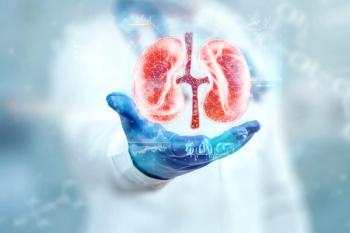
More Study Needed on Benefits of Immunotherapy in Narcolepsy
These review results were mixed on the use of immunotherapy to treat narcolepsy, with benefits typically being temporary.
The chronic
However, previous results on study in this area are mixed. More well known, the authors point out, is that patients with narcolepsy “have lower education and higher unemployment rates compared to the general population and present with higher frequency of other medical/psychiatric comorbidities and concurrent medication usage, and reduced rates of marriage/cohabitation.”
Their review covered supportive evidence for immunotherapy’s use in treating narcolepsy, outcomes, current issues, and future directions.
The evidence the authors found supporting a possible autoimmune-related role in the narcolepsy space are the following:
- Loss of hypocretin-secreting cells, which is a core feature of narcolepsy type 1 (NT1), while sparing melanin-concentrating hormone neurons
- A possible association between the hypocretin-secreting cell loss and the HLA DQB1*06:02 gene
- An increased frequency of narcolepsy among people with strep throat diagnosed before the age of 21, with streptococcal antibody levels elevated in patients’ sera by the 3-year mark after strep onset vs age-matched controls
- A link between narcolepsy and the influenza A virus subtype H1N1 (A/H1N1) was seen recently in China, where the incidence of narcolepsy increased 3 times within a 6-month period during a peak of the A/H1N1 pandemic
- An increase in cases was seen after people were vaccinated with the H1N1 Padenmrix vaccine, leading to speculation that the autoimmune destruction of hypcretin neurons could be triggered with H1N1 flu antigens.
- A greater risk of developing narcolepsy was seen in the presence of antigenic peptides to CD4+ T cells (DQB1*06:02 is an human leukocyte antigen class 2 molecule, and these types of molecules “are responsible for the presentation of antigenic peptides to CD4+ T cells”)
In addition, immunotherapy use results were mixed:
- Overall negative correlation between the use of corticosteroids and narcolepsy, particularly a return of EDS and cataplexy following treatment taper
- Cataplexy improvement seen after intravenous methylprednisolone treatment
- Plasmapheresis has produced only transitory benefits, and even then in the 1 person treated with the method for NT1
- Intravenous immunoglobulin (IVIG) improved outcomes in that administration soon after NT1 onset improved the frequence and severity of cataplexy and Epworth Sleepiness Scale Scores improved; however, hypocretin-1 concentration in cerebrospinal fluid was unchanged or elevated
- IVIG benefits were chiefly considered transient, in that persistent changes were not noted, benefits were deemed “short lived,” or the treatment “failed to show an effect”
Noting that a majority of the evidence they found on immunotherapy use in narcolepsy came from small, uncontrolled case studies with “different treatment schemes and highly heterogeneous outcome measures,” the investigators said current evidence does not support immunotherapy’s use for this disease state.
“Randomized controlled clinical trials are needed to provide substantial evidence and avoid bias related to placebo effect and to spontaneous disease improvements,” they noted. “No disease-modifying cure is available, calling for future research on treatment strategies as well as on diagnostic approaches able to identify patients who will develop NT1 among those complaining of only EDS.”
The time is ripe, they concluded, for randomized, double-blind, placebo-controlled trials into the use of immunotherapy in narcolepsy.
Maggie L. Shaw contributed to this article.
Reference
Giannoccaro MP, Liquori R, Plazzi G, Pizza F. Reviewing the clinical cmplications of treating narcolepsy as an autoimmune disorder. Nat Sci Sleep. 2021;13:557-577. doi:10.2147/NSS.S275931
Newsletter
Stay ahead of policy, cost, and value—subscribe to AJMC for expert insights at the intersection of clinical care and health economics.








































